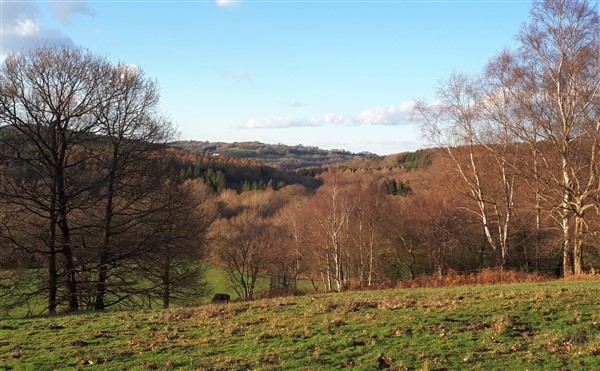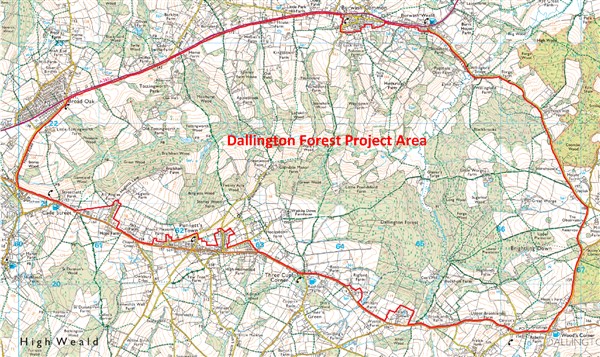
History of the Dallington Forest Project
Dallington Forest grows on the High Weald in East Sussex, UK, near the ancient villages of Brightling, Burwash and Dallington, in a landscape considered to be one of the best surviving, coherent medieval landscapes in Northern Europe.
The Forest has been a utilitarian landscape for centuries providing many different products. As a result most of the features and habitats that exist today are due to the working of the land and that growing upon it. The area has a varied suite of soils and habitats that all interact thus making it enormously important for overall species diversity.

In 2010 the owners of a 9.25 ha (23 acre) plot within Forge Wood, Dallington Forest, gifted it to Jamie Simpson after he’d spent 2 years removing Rhododendron ponticum for nature conservation purposes.
Following his discovery of veteran beech and other impressive trees during the removal of the Rhododendron, a programme of works was initiated to enhance the woodland’s biodiversity value. The aim was to have a site where best practice and experimental veteran tree and woodland management – all with long-term monitoring – could be undertaken for the enhancement of everyone’s understanding.
Over the following 5 years, restoration works were largely completed and after getting to know the surrounding landscape it became clear that Forge Wood sat within a very large area of continuous and varied woodland that contained numerous veteran trees. Outside of the woodlands are notable grassland, heathland and hedgerow habitats that when combined with the woodlands offer a variety of opportunities for wildlife.
An area deemed worthy of investigation was identified that encompassed an unusually large tract of land (for this part of the country) with no through roads, little habitation and considered to be of local and national significance and value. Conveniently delineated by the A266, B2096 and Burwash to Woods Corner roads and covering 1740 ha (4300 acres), this has become the Dallington Forest Project area and includes Bingletts Wood SSSI, Dallington Forest SSSI, and part of the Willingford Meadows SSSI.

The Project aim is to highlight and conserve this richness and attempt to increase appropriate and necessary management, always to the highest standards and latest scientific understanding.
The area of the Dallington Forest Project can become a highly productive and sustainable landscape if managed correctly. Management that encourages conditions conducive for veteran tree growth and features, as well as actions such as restoring tree laying on boundary banks, are essential if the site’s character is to endure.
Continued management is vital for both the future survival of the associated biodiversity and to maintain the connection between the inhabitants and landscape utilisation, but this must be undertaken in a sensitive and considered manner.
—————————